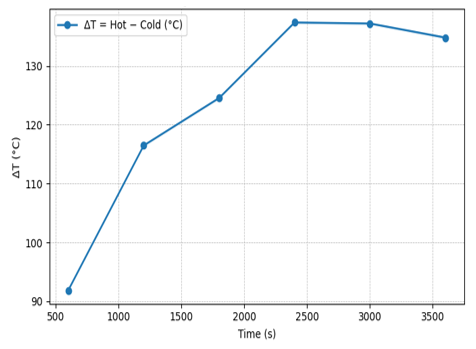Testing of a Thermoelectric Generator (TEG) Using Heat from a Satay Furnace
DOI:
https://doi.org/10.56862/irajest.v1i1.303Keywords:
Heat transfer, Satay Furnace, Seebeck effect, Thermoelectric generatorAbstract
This study tested TEGs that utilize the heat of the satay furnace. The purpose of the research is to map heat transfer to the TEG module. The next goal is to measure the voltage, current, and electrical power generated. The test was conducted experimentally at six combustion time intervals. The parameters measured include hot side and cold side temperature, ∆T, voltage, and current. The estimated heat transfer was calculated using a simple radiation and conduction model. The results show a maximum power of 0.65 W at TEG-3 at 3,600 s. This condition is achieved at ∆T ≈ 46.7 °C with a voltage of 2.18 V and a current of 0.30 A. The lowest power of 0.53 W is recorded at TEG-2 at 3,600 s. The increase in ∆T is directly proportional to the rise in power in the test range. These results confirm the potential of satay kiln waste heat as a source of micropower.

Downloads
Published
How to Cite
Issue
Section
License
Copyright (c) 2025 IRA Journal of Engineering Science and Technology

This work is licensed under a Creative Commons Attribution-ShareAlike 4.0 International License.









